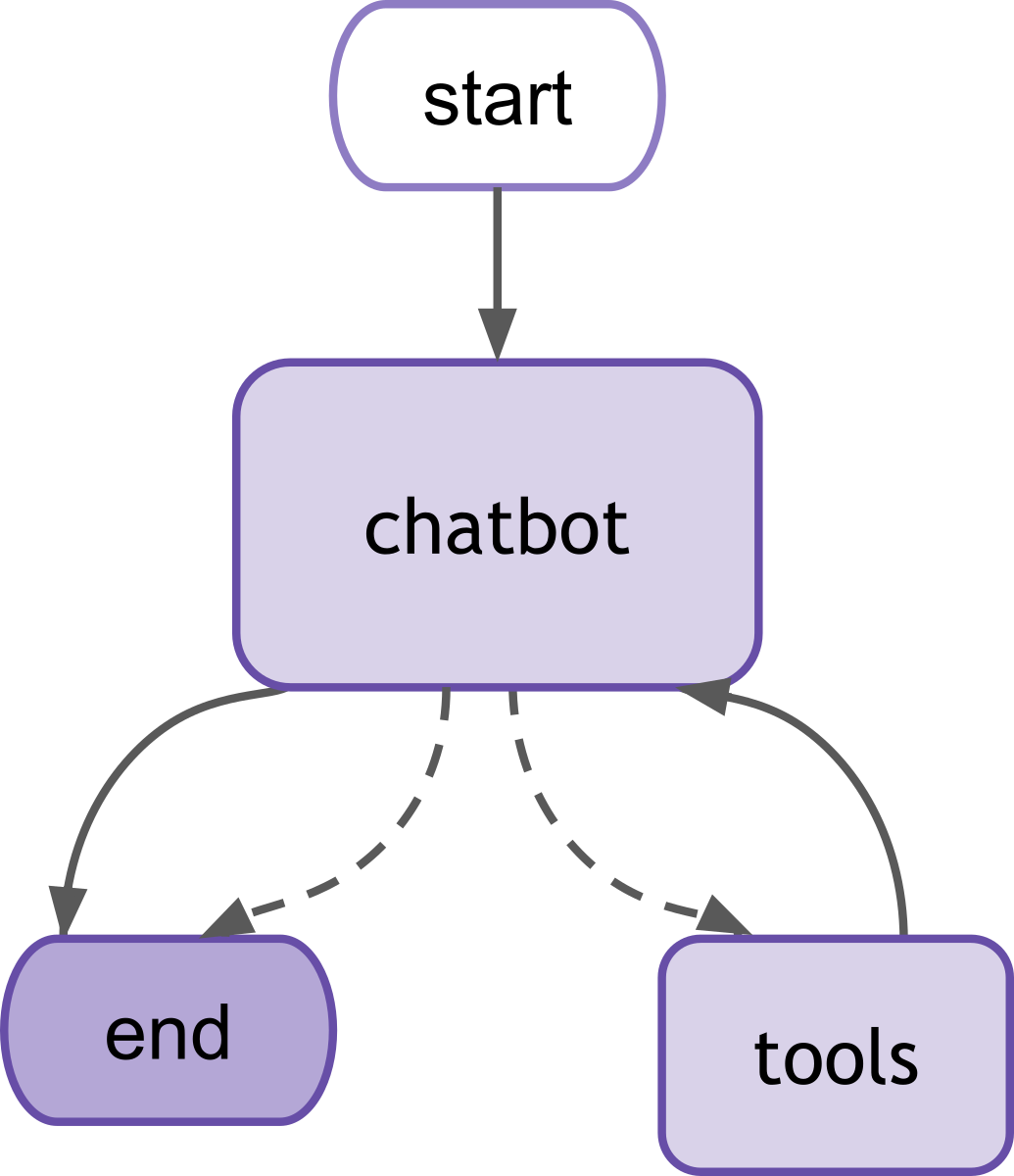Adding memory and conversation
Designing Agentic Systems with LangChain

Dilini K. Sumanapala, PhD
Founder & AI Engineer, Genverv, Ltd.
Testing tool use

Testing tool use
# Produce the chatbot graph display(Image(app.get_graph().draw_mermaid_png()))# Define a function to execute the chatbot, streaming each message def stream_tool_responses(user_input: str): for event in graph.stream({"messages": [("user", user_input)]}):# Return the agent's last response for value in event.values(): print("Agent:", value["messages"])# Define the query and run the chatbot user_query = "House of Lords" stream_tool_responses(user_query)
Visualizing the diagram

Streaming the output
Agent: [AIMessage(content='', additional_kwargs={'tool_calls': [{'function': {'arguments': '{"query":"House of Lords"}', 'name': 'wikipedia'}, 'type': 'function'}]}, response_metadata={'...'}])]Agent: [ToolMessage(content='Page: House of Lords\nSummary: The House of Lords is the upper house of the Parliament of the United Kingdom. Like the lower house...The House of Lords also has a Church of England role...', name='wikipedia', id='...',')]Agent: [AIMessage(content='The House of Lords is the upper house of the Parliament of the United Kingdom, located in the Palace of Westminster in London. It is one of the oldest institutions in the world..., additional_kwargs={},response_metadata= {'finish_reason': 'stop', 'model_name': 'gpt-4o-mini-2024-07-18', 'system_fingerprint': 'fp_0ba0d124f1'}, id='run-ae3a0b4f-5b42-4f4e-9409-7c191af0b9c9-0')]
Adding memory
# Import the modules for saving memory from langgraph.checkpoint.memory import MemorySaver# Modify the graph with memory checkpointing memory = MemorySaver()# Compile the graph passing in memory graph = graph_builder.compile(checkpointer=memory)
Streaming outputs with memory
# Set up a streaming function for a single user def stream_memory_responses(user_input: str):config = {"configurable": {"thread_id": "single_session_memory"}}# Stream the events in the graph for event in graph.stream({"messages": [("user", user_input)]}, config):# Return the agent's last response for value in event.values(): if "messages" in value and value["messages"]: print("Agent:", value["messages"])stream_memory_responses("What is the Colosseum?") stream_memory_responses("Who built it?")
Generating output with memory
stream_memory_responses("What is the Colosseum?")
Agent: [AIMessage(content='', additional_kwargs={'tool_calls': [{'index': 0, 'id': '...', 'function': {'arguments': ' {"query":"Colosseum"}', 'name': 'wikipedia'}, ...])]Agent: [ToolMessage(content='Page: Colosseum\nSummary: The Colosseum is an ancient amphitheatre in Rome, Italy. It is the largest standing amphitheatre in the world..)]Agent: [AIMessage(content='The Colosseum, located in Rome, is the largest ancient amphitheatre still standing. Built under Emperor Vespasian and completed by his son Titus, it hosted gladiatorial games and public events. It is also known as the Flavian Amphitheatre due to its association with the Flavian dynasty.', additional_kwargs={}, response_metadata={'finish_reason': 'stop', 'model_name': 'gpt-4o-mini-...', ...')]
Generating output with memory
stream_memory_responses("Who built it?")
Agent: [AIMessage(content='The Colosseum was built by Emperor Vespasian around
72 AD and completed by his successor, Emperor Titus. Later modifications were
made by Emperor Domitian...')]
Let's practice!
Designing Agentic Systems with LangChain

